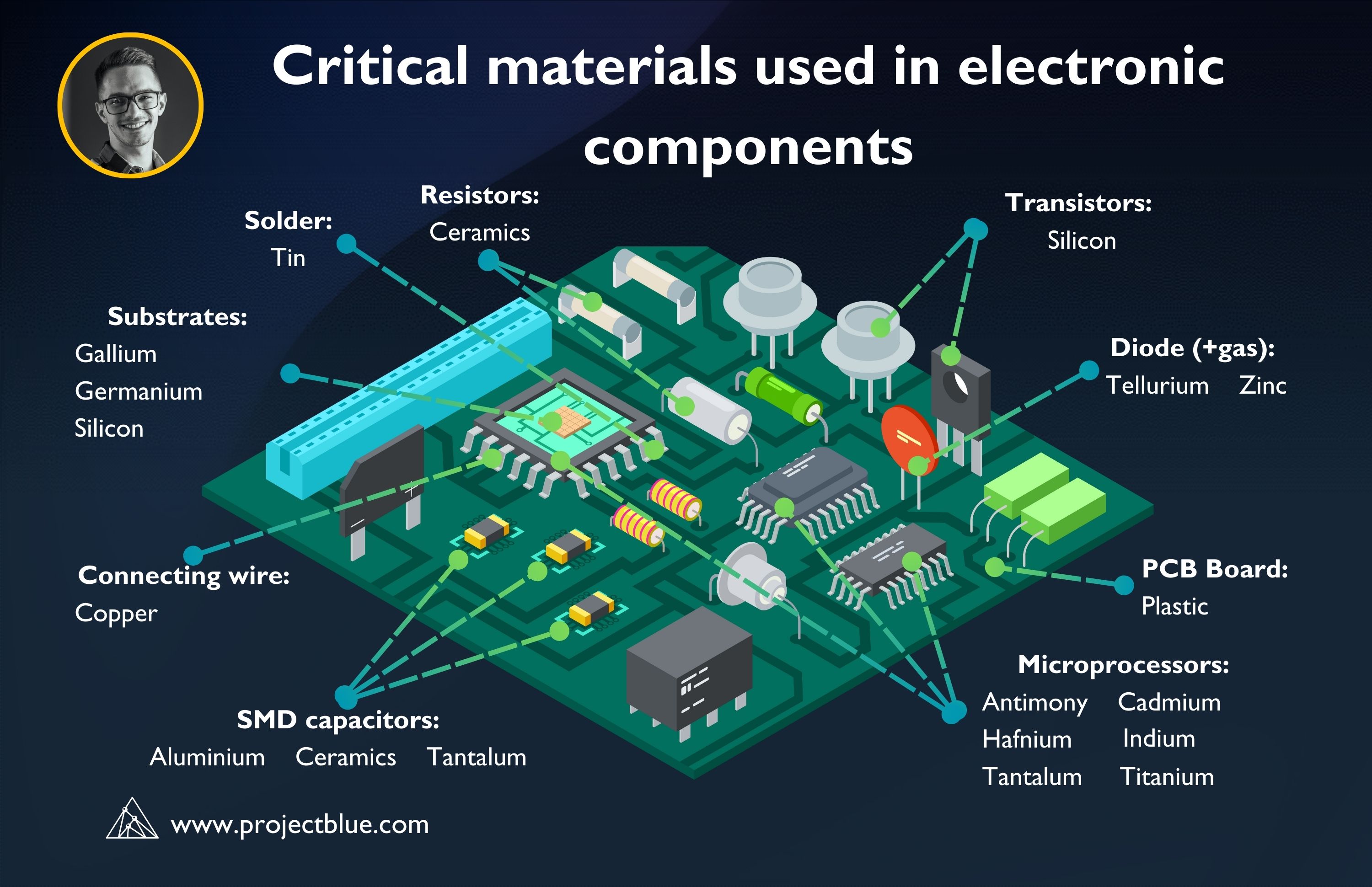How will the booming semiconductor market affect critical materials?
Opinion Pieces

16
Apr
2024
How will the booming semiconductor market affect critical materials?
Semiconductor trends will be key drivers of demand for a host of critical materials.
Semiconductor products include logic integrated circuits (ICs), analogue ICs, microprocessor and microcontroller ICs, and memories. Growth in demand for these products has been booming, underpinned chiefly by portable electronics trends.
Cell phone trends provide an illustrative example of why semiconductor demand is on the rise. Today’s cell phones contain a vast array of microprocessors compared to the phones of twenty years ago. This is the result of numerous factors including consumer preferences for smaller handsets; enhanced safety requirements, and more sophisticated applications requiring more processing power.
The number of transistors that exist on the same sized chip today versus twenty years ago is 50x more (from 100M in 2000 to 50Bn in 2020) in volume. Each additional transistor on a chip allows the chip to be capable of doing more calculations if connected in parallel.
This trend is set to increase. As the IDC notes, “…with the global demand for artificial intelligence (AI) and high-performance computing (HPC) exploding, coupled with the stabilizing demand for smartphones, personal computers, infrastructure, and resilient growth in automotive; the semiconductor industry is expected to usher in a new wave of growth”.
This growth will mean more demand for a host of critical materials used in semiconductor applications, including gallium, germanium, indium, and silicon.
The rise in microchips
The main driver for the growing semiconductor market is portable electronics which have seen consistent demand growth over the past decade despite market maturation in certain applications. Project Blue estimates growth of Li-ion demand in portables at a CAGR of 21% over the past decade, which serves as a good proxy for overall portables demand.
While general portables consumption trends have underpinned semiconductor demand, it is technological advancements for miniaturization, faster processing speeds, and lower power consumption which have further driven chip manufacturing innovation and demand in support of emerging technologies like AI and 5G, while new technologies such as electric vehicles have created new demand opportunities.
Meanwhile, while novel applications have created a demand for cutting-edge semiconductor technology, a concurrent trend has also seen more established electronic appliances get in on the action. The Internet of Things (IoT) trend and the move to “smart technology” has led to common household applications such as refrigerators, air coolers, lightbulbs, speakers, alarm clocks, and coffee machines, now containing semiconductors to be connected to the internet. As such, the demand for even basic semiconductors has risen substantially.
These trends combined have underpinned the sharp rise in semiconductor production. TSMC, the world’s largest semiconductor manufacturer, produced 703 million square inches (MSI) of semiconductors in 2012. In 2022, the company produced 1,725 MS, an increase of 245% over the decade. Meanwhile, silicon wafer shipments (generally seen as a proxy for chips) have increased at a CAGR of 3.0% over the past decade, and 3.7% since the turn of the century.
Trajectory of the semiconductor market
In 2022, the semiconductor market reached an all-time high in terms of silicon wafers shipped, reaching 14,713 MSI. However, last year semiconductor demand dropped back to 2018 levels as a result of supply chain issues, inflationary pressures and low consumer spending. In 2023, total silicon wafer shipments decreased by 14.3%. This dip in the market is believed to be temporary and Project Blue estimates that the semiconductor market will grow at a CAGR of 4.0% to 2034, and 3.2% to 2050.
Research and development funding is experiencing a significant upswing, propelling the industry towards the development of ever more sophisticated and efficient semiconductor technologies. Meanwhile, recognizing the vulnerabilities exposed during recent supply chain disruptions, industry leaders are actively implementing diversification strategies, fostering more resilient and geographically dispersed production networks.
Through these concerted efforts, production capacity is anticipated to remain aligned with the ever-increasing demand for semiconductors, which serve as the fundamental building blocks for advancements in artificial intelligence, the IoT, and a multitude of other transformative technologies shaping the global landscape.
The impact on critical materials
With the rising demand for high-end semiconductors, the raw materials necessary to facilitate the development of reliable and reputable microchips is set to increase. Many critical materials will see an increase in their consumption.
Silicon metal demand for semiconductor applications is expected to grow at a CAGR 4% to 2034 owing to an increasing demand in portable electronics as it is the main component in most electronic applications.
Demand for tantalum, one of the metals used as a thin oxide film that protects from copper leaching, is expected to grow by 4%py, meaning that around 500t Ta will be consumed annually by 2034 in the production of semiconductor wafers. Despite tantalum’s high performance, it is theoretically replaceable by other stable metals such as titanium. However, these alternatives to tantalum are unlikely to affect the market as tantalum is the best in the market for its required characteristics.
Gallium and germanium will also see demand increases. These metals sometimes work in competition with silicon as a base substrate for semiconductor applications. Due to their cost, they are not generally considered when developing products for general consumers, and typically have highly specific or military applications. Nonetheless, military and high-tech is expected to increase and germanium demand is expected to rise at 4%py, while gallium demand is set to increase at 3%py.
Antimony and hafnium are also likely to benefit from the booming semiconductor market. These metals are typically used for doping silicon substrates for the creation of n- and p-type transistors. Hafnium specifically, can also be used as a gate insulator in the more advanced transistors, and as chip miniaturization continues, demand is expected to rise.